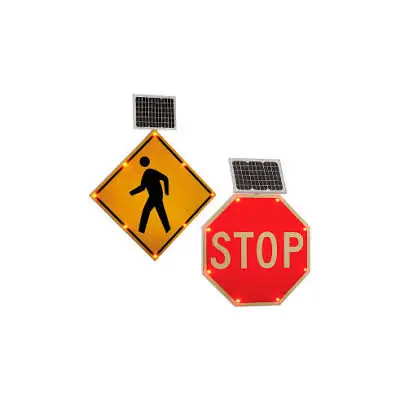Solar-powered traffic signals contribute to reducing nighttime accidents and improving road safety statistics through several key mechanisms.
Here’s how these sustainable traffic signals enhance safety during nighttime hours:
- Continuous Illumination:
- Solar-powered traffic signals ensure continuous illumination during nighttime hours, enhancing visibility for drivers, cyclists, and pedestrians.
- Well-lit intersections and crosswalks reduce the likelihood of accidents caused by poor visibility.
- Reliable Operation:
- Solar-powered traffic signals are designed with reliable energy storage systems, typically using batteries, to ensure consistent operation during periods of low light or complete darkness.
- Uninterrupted signal operation contributes to a predictable traffic flow, reducing the risk of collisions.
- Reduced Dependency on Grid Power:
- Solar-powered traffic signals operate independently of the electrical grid, making them resilient during power outages or grid failures.
- In areas prone to power disruptions, solar-powered signals continue to function, preventing signal failures that could lead to accidents.
- Low Maintenance Requirements:
- Solar-powered traffic signals often have lower maintenance requirements compared to traditional signals connected to the grid.
- Reduced maintenance needs contribute to increased reliability and ensure that signals are consistently operational.
- Increased Visibility and Recognition:
- The use of LED lights in solar-powered signals enhances visibility and recognition, especially at nighttime.
- LEDs provide clear and bright indications, making it easier for drivers to interpret signals and respond appropriately.
- Adaptability to Local Conditions:
- Solar-powered traffic signals can be installed in remote or off-grid locations where traditional power sources may be challenging to access.
- This adaptability extends the reach of traffic signals to areas with nighttime safety concerns.
- Smart Timing and Control Systems:
- Some solar-powered traffic signals are equipped with smart timing and control systems that adjust signal timings based on real-time traffic conditions.
- Optimized signal timings help manage traffic flow efficiently and reduce the risk of accidents,solar powered traffic signals particularly at intersections.
- Enhanced Crosswalk Safety:
- Solar-powered pedestrian signals and crosswalk lights contribute to safer pedestrian crossings during nighttime hours.
- Clear and well-illuminated crosswalk signals improve pedestrian visibility, reducing the likelihood of accidents involving pedestrians.
- Integration with Warning Systems:
- Solar-powered traffic signals can be integrated with warning systems, such as flashing lights or audible alerts, to draw attention to specific hazards or road conditions.
- Warning signals contribute to increased awareness and preparedness, reducing the risk of accidents.
- Sustainable and Environmentally Friendly:
- Solar-powered traffic signals align with sustainability goals, utilizing clean and renewable energy sources.
- Their environmentally friendly nature contributes to a more sustainable transportation infrastructure.
- Community Awareness and Acceptance:
- Solar-powered traffic signals often contribute to community awareness and acceptance of sustainable technologies.
- Communities may be more likely to support initiatives that prioritize safety and environmental responsibility.
By addressing the challenges associated with traditional grid-dependent traffic signals, solar-powered traffic signals contribute to safer nighttime driving conditions. Their reliability, low maintenance requirements, and sustainable features make them valuable tools for improving road safety statistics, reducing accidents, and enhancing overall transportation safety.
